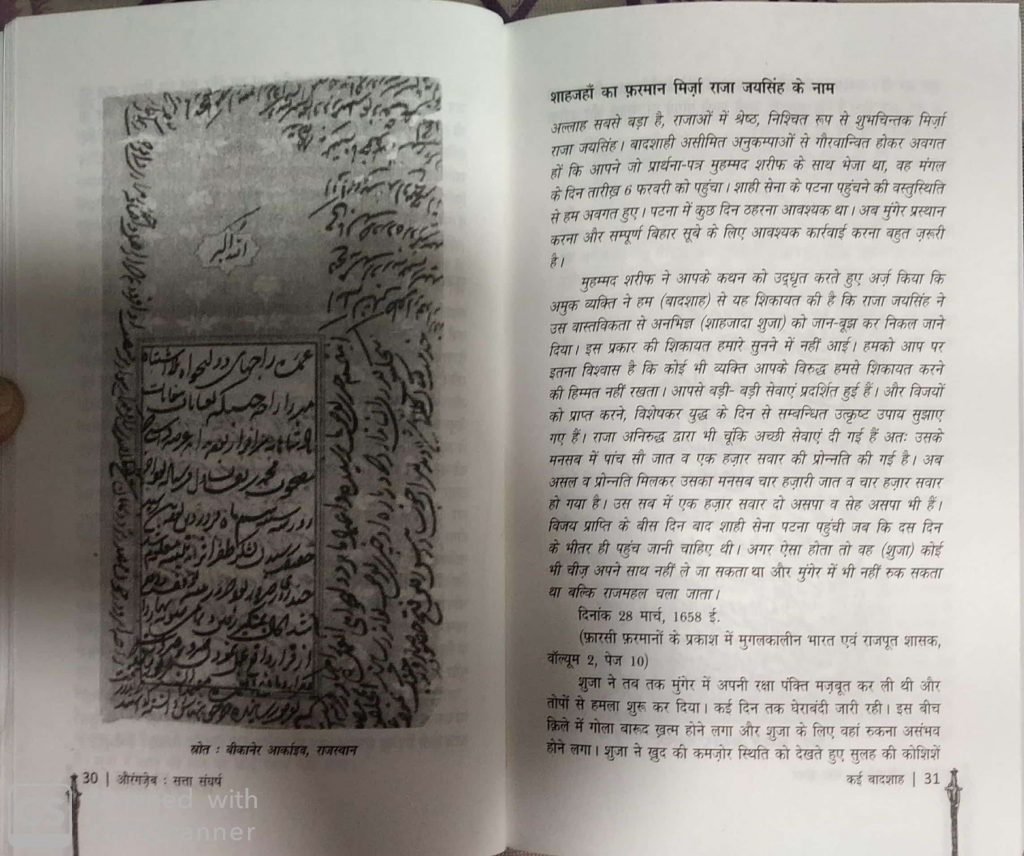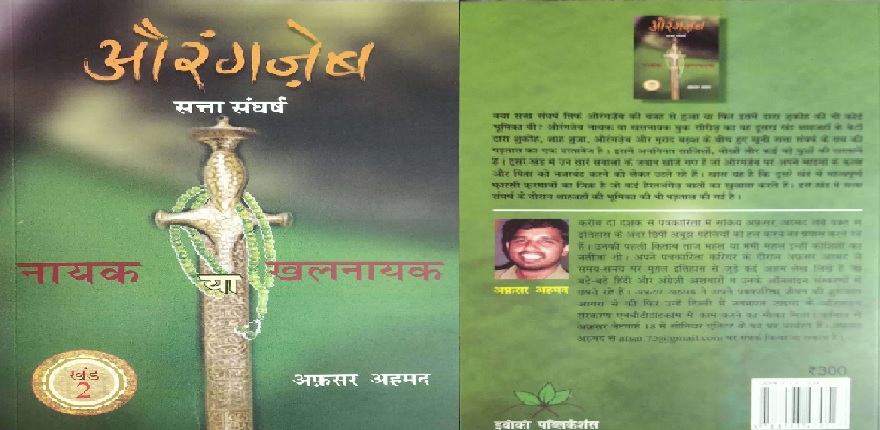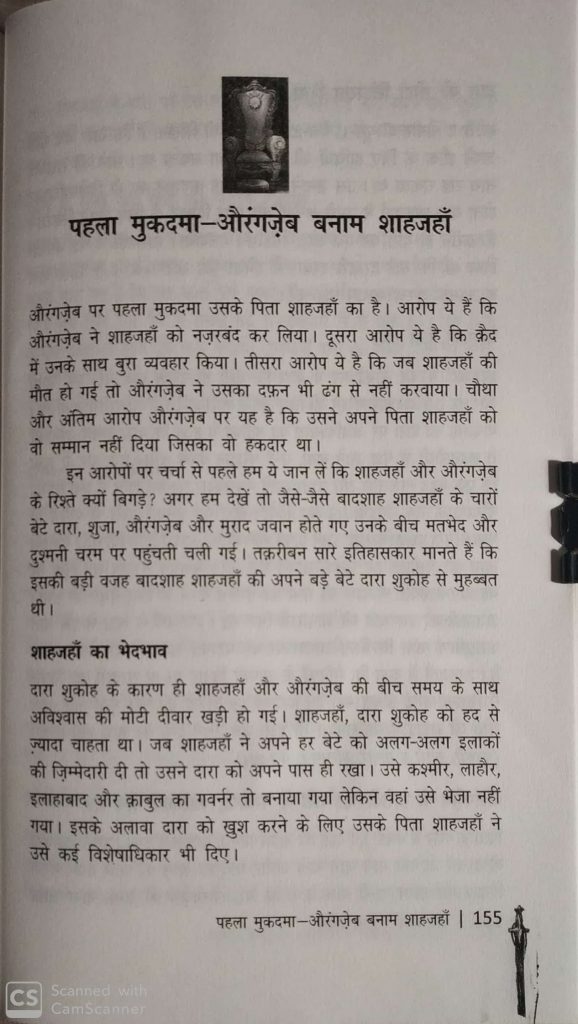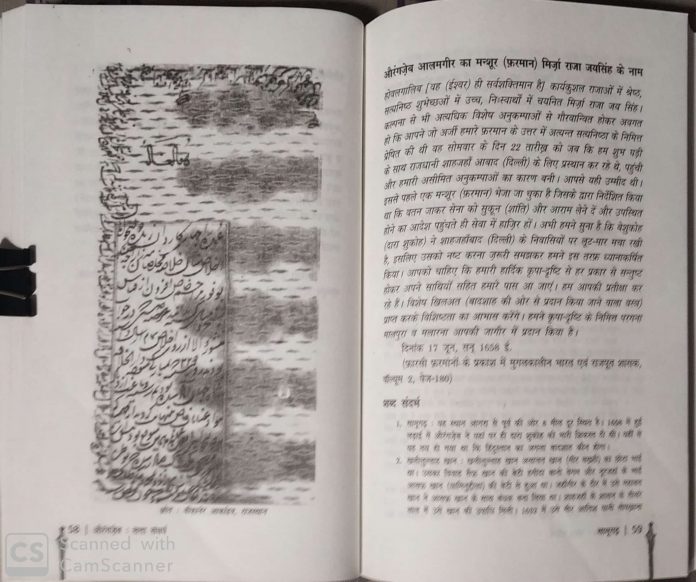Yusuf Ansari, TwoCircles.net
Whenever there is a mention of Mughal Age, Aurangzeb and Dara Shikoh are always standing one on one. The third prominent character is Shah Jahan, whose favoritism of one of his sons led to the imprisonment of others. Where one section of historians side with Aurangzeb, the other equal half supports Dara Shikoh. Both the sides choose each of them as a hero and the other as a villain according to their own perceptions. Those who consider Aurangzeb as the hero call him no less than a diamond of the Sultanate while those side with Dara Shikoh, regard him as the real hero and diamond of the Crown.
The two brothers have always stood in contrast with each other, opposing each other as the strongest opposition. People reading history also find both the brothers always at contention with each other. To break this very belief, journalist Afsar Ahmed has written a book, ‘Aurangzeb: Nayak ya Khalnayak’ (Aurangzeb: Hero or Villain). The book claims to differ in prevailing accounts of the two Mughal stalwarts, where Afsar has tried to carve both the characters neutrally, approaching it from a journalistic perspective and analyzing the events in their lives through a historical lens.

The tales of power struggle between Aurangzeb and Dara Shikoh
The story of power struggle between Aurangzeb and Dara Shikoh is one in which the role of a hero or a villain cannot be attributed to one, but both of them, depending on various incidents proved to be right and wrong according to historical accounts narrated in the book. This story of is one marked with conflict of interests, revenge, cheating, deceit, greed and treachery, underlining the shades and struggles of a political life. The book weaves an intriguing tale in which no family member can be trusted – the son, the father, brother, or anyone else. Each of the family members were bloodthirsty to kill each other for the throne. Out of this grim tale emerge two most big players and the duo, Aurangzeb and Dara Shikoh.
An attempt to challenge traditional narratives
Author Afsar Ahmed has tried to inspect events in the light of facts and not commonly prevailing beliefs of people. The book, written after painstaking research, brings some very good reasons for the fans of Aurangzeb to believe he was deceptive and cruel while it also discloses the greediness and conspiracies of Dara Shikoh. Afsar has taken help from letters, inscriptions, manuscripts and coins dating back to the Mughal period, to draw analogies and character sketches. The entire account from Delhi to Agra and the Deccan, Afsar has dealt with each phase of the Empire with great factual accuracy. The story, hence, is full of ups and downs in personal and political relationships shared within the family of Mughal rulers, it is one where greed and emotions stand face to face with each other on the battleground.

Did Aurangzeb hate his father Shah Jahan?
While many historians remain inclined to one aspect of Aurangzeb’s character, namely, religious bigotry, here in this book, the author has tried to investigate this using a journalistic concern. This is an actual fact check where the author provides an in depth thread of the relationship between the father and son using a royal letter written by Aurangzeb to his father, Shah Jahan.
In this letter, Aurangzeb writes:
“I have repeatedly clarified that I had no ulterior motives or intentions during the Agra March. Allah is witness to the fact that such deceptive and impure intention has never been mine. When you fell ill, and I saw that the subjects in your Kingdom started favoring Dara Shikoh’s biased and irreligious thinking, I realized that your eldest son and my eldest brother, Dara Shikoh, had absolutely no religious grounding or knowledge necessary to run politics. Therefore I took it as my responsibility to fight his corruptive handling of political affairs and announced Jihad against him.”
Addressing the above words, author Afsar Ahmed had asserted that the reason Aurangzeb imprisoned his father was solely a political measure of helplessness and that he held no personal hatred towards him. The series of conspiracies held against Aurangzeb had compelled him to believe no one, including his own father so he had to take certain moves to secure the Empire for his family.
Did Aurangzeb get Dara assassinated?
A tremendous charge on Aurangzeb is that he treated his brothers violently and even got his brother Dara assassinated by beheading him. But is it really true? Different historians of the time give different biographical accounts of the last few years of Dara’s life. Niccolao Manucci and François Bernier, the most famous historians at that time have mostly collected accounts from word of the mouth in the Granz Bazars of the Mughal Era cities. This is so because both these writers had no access to either the official language or political manuscripts of the Sultanate. On the other hand, Mustad Khan who wrote ‘Maasir – e- Alamgiri’ and Khafi Khan who wrote ‘Muntakhab Ul Lubaab’, who were historians writing in the state languages that time, mention no such incident of the beheading of Dara Shikoh on orders of Aurangzeb in their accounts. What is unique about Afsar’s book is that he has not only given space to accounts of various historians in his book, but has also given a comparative study of these evidences using charts.

Afsar has also attached pictures of different official manuscripts, letters and documents written by Aurangzeb, Shah Jahan as well as Dara Shikoh. To add credibility to his research, Afsar has also attached the photographs of original official Persian manuscripts. The writer Afsar Ahmed has made skilful use of his journalistic writing to depict an informative, fact-based historical account of the Mughal emperor Shah Jahan, Aurangzeb and his brother Dara Shikoh. The language of the book is simple, with glimpses of colloquial words to attract the reader. Published by Iveko, the book is available at Rs 300 on Amazon on both Kindle and Paperback.


